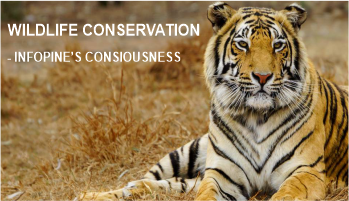Digital Transformation for Textile Manufacturing Industry
Digital Transformation for Textile Manufacturing Industry By Ankita Sahu Designation -Digital Marketing Manager Book a Demo We all know COVID-19 crisis has brought a huge change in the way of work in all sectors. Companies have moved towards digital transformation. It is helping in increase in profit margins and enabling the resource to work remotely and helps in onboarding and communicating the customers via digital channels. Textiles are been utilized in a wide range of ventures, which includes fashion, bedding, interior design, medical care, and automobiles. Textile manufacturers are moving towards Industry 4.0 and automate control over the whole textile creation process and have streamlined transactions, refined product delivery, and enhanced internal and external value chains. Artificial intelligence, robotic automation, additive technology, and human–machine interaction, have enhanced manufacturing. We can say that a digital “backup Plan” is no longer an option. Textile industries are using solutions IoT integration, AI, and ERP for mid-size and large enterprises. The Technologies That are Impacting The Textile Manufacturers ERP: Enterprise Resource Planning, helps textile manufacturers in managing their workflow starting from Order, Inventory, Production, Quality Control, Ware House, Order Fulfilment, Finance & Accounting & Customer Management. ERP enables departments and decision makers to work remotely by providing them the real time data that can be accessed anytime and from anywhere. It also helps departments to get connected with one another. It monitors, controls, analyse and understands business process. It supports supply chain, sourcing and Procurement. Artificial Intelligence (AI): Artificial Intelligence/ Machine-Learning and Computer Vision are addressing the textile defect detection problem. In textile sectors, different types of faults are available i.e., hole, scratch, stretch, fly yarn, dirty spot, slub, cracked point, colour bleeding etc; a human eye may miss these faults and that can affect the quality process massively. AI/ML & Computer vision-based algorithm can recognize all types of faults. AI is helping textile manufacturers in transforming their production process. It also helps is providing the access to real time and old data that helps in enhancing the operational efficiency. It becomes simpler to modify human skills & abilities. AI have impact on every step of the process starting from item cost, material assembling, data collection, timely production, quality control, or computer integrated manufacturing. Pattern inspection, defect detection, and colour matching are the most commonly used AI applications for Textile manufacturing industries. Internet of Things (IoT): Manufacturers are using IoT for enhancing their customer’s experience. It makes the communication easy between the manufacturers, retailers and consumers. IoT plays a very vital roles for textile industry. It helps in smart management, quick decision, better maintenance & Process optimisation. It helps in managing the following KPI’s: WIP tracking, track material movement, track product SOP flow, Machine availability Machine ON & OFF status Batch Creation Down Time & Reason Energy Perimeter Operator efficiency Daily Shift wise reports Benefits of Digitization for The Textile and Apparel Industry Sustainability: After the digitalization implemented in textile industry supply chain & operational management became more sustainable. There are programmed machine that are helping the manufacturers to generate improved quality output. By the use of cloud-based technologies, decision makers are able to deliver the order fulfilment on time. It helps with better checks & Balances and in making quick decision which in turn helps in better quality & profit margins. Dashboards can be accessible from anywhere and anytime. Manufacturers are evolving towards more eco-friendly environment by adapting this transformation, such as it results in less CO2 emissions, increase energy efficiency, and encouraging responsible consumption. It is also beneficial in social and economic areas. Efficiency: Helps in increasing the efficiency as there is a growing requirement of improved and enhanced coordination in textile industry because of its worldwide distribution. Cost cutting and boosting productivity methodologies that are required to automate a business are available. Cost Effectiveness: Textile manufacturing units are quite expensive. There are wide range of sub cost required like equipment management, labour management, marketing costs, maintenance costs, and space costs. To regulate this cost digital transformation is required. Enhanced Safety: Digital solutions provides electronic signatures and e-invoicing that are totally more secure than physical documentation. It also helps to avoid non-compliance issues in different countries. Staying Competitive: Organizations are developing digital capabilities to gain an edge in a hypercompetitive market. After the COVID-19 pandemic, digital adoption is accelerating industries. Conclusion: Digital manufacturing technologies are revamping every part of the textile manufacturing industry. The execution of digital transformation and developed work process have modified the landscape of organizations and that also resulted in cost saving and enhanced productivity. Digitalization is not simple. It requires well-thought-out strategies. Digital Transformation is driving the fashion, apparel, textile, and footwear industries to the next generation. It has been proved to be a blessing for textile industries.




